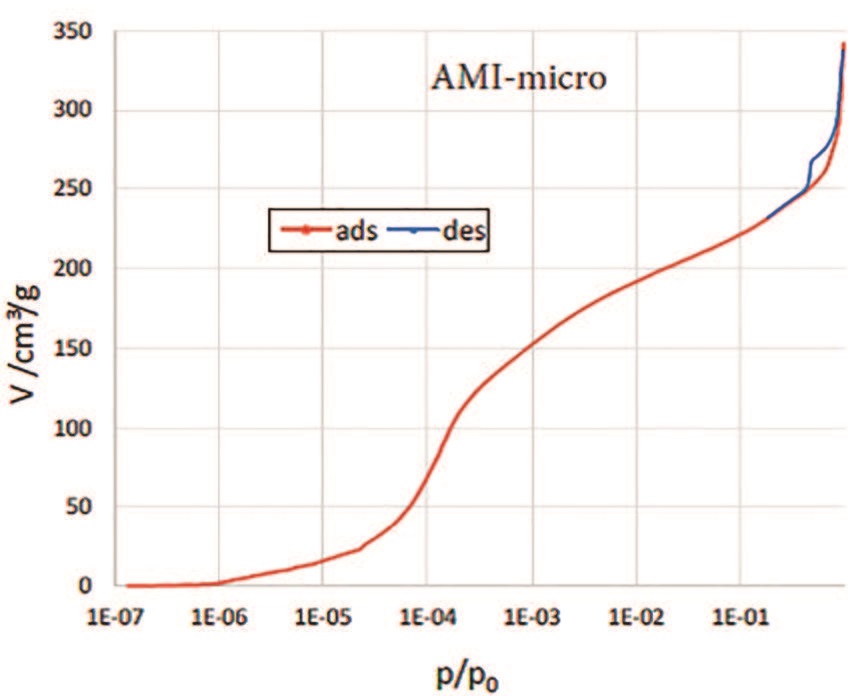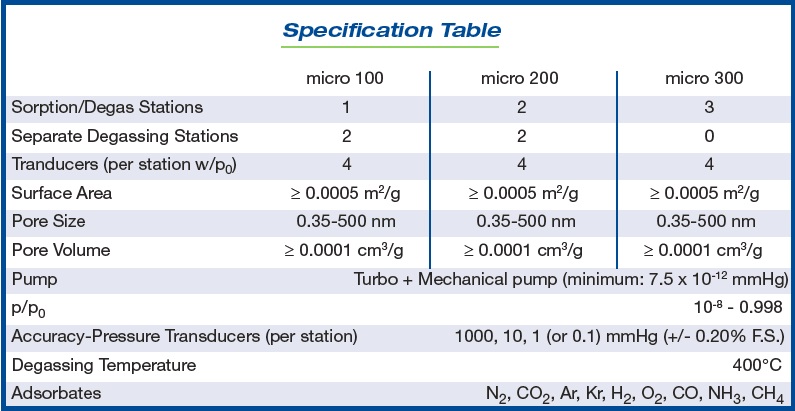Each station in the AMI-micro has an independent dosing manifold with three pressure transducers: 1000, 10, and 1 (or 0.1) mmHg. Each of the stations also includes an in-situ degassing module to allow for treatment of the sample to 400°C. This in-situ degassing thus prevents any contamination during possible sample transfer. In addition, the AMI-micro 100 and AMI-micro 200 are built with two dedicated degassing stations.
If multiple stations are selected, each station acts independently from the other. Thus, the instrument can start sorption experiments on different samples at the same time. Through software control, the AMI-micro can automatically:

• Dose adsorbate
• Raise and lower the dewar
• Determine if equilibrium conditions are satisfied
• Plot the real-time physisorption isotherm
• Heat the sample for degassing
• Measure p0 at each point with dedicated sensor
• Automatically correct for Free Space with He
The AMI-micro can display and interpret data in various methods, including:• Single or Multi-point BET surface area• Adsorption and Desorption isotherms• Langmuir surface area• External Surface Area (statistical thickness method)• BJH Pore Size Analysis• t-Plot• HK Pore Size Analysis• SF Pore Size Analysis• Average pore size, total pore volume

SPECIFICATIONS AND INDUSTRIES
The AMI-micro series can serve the following industries:• Catalyst Research• Ceramics• Oil and Gas• Activated Carbon and Carbon Black• Building Materials• Pigments, Paints, and Thickeners

SPECIFIC TESTS AND CAPABILITIES
- Physisorption
- Gas adsorption
- Gas sorption
- Nitrogen sorption
- Surface characterization
- Pore analysis
- Pore size
- Pore size distribution
- BET surface area
References
- ISO 9277
- DIN 66131
- IUPAC Technical Report “Physisorption of gases, with special reference to the evaluation of the surface area and pore size distribution”; M. Thommes, K. Kaneko, A.V. Neimark, J.P. Olivier, F. Rodriguez Reinoso, J. Rouquerol and K.S.W Sing, Pure Appl. Chem. 87, 1051 (2015);
- BET Analyzer
